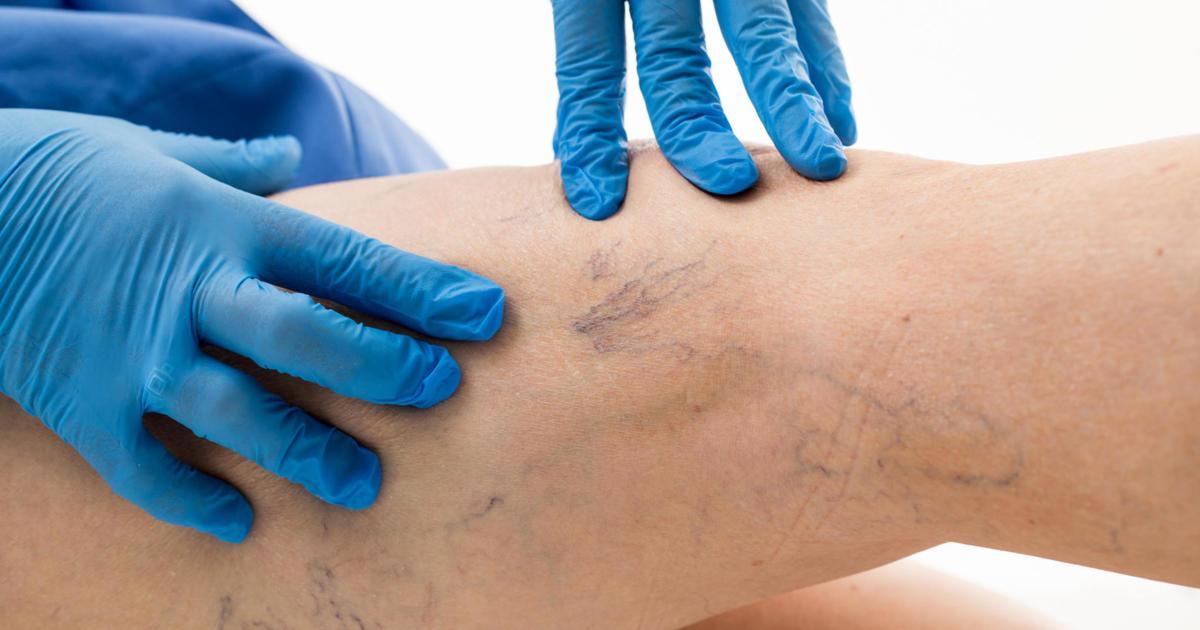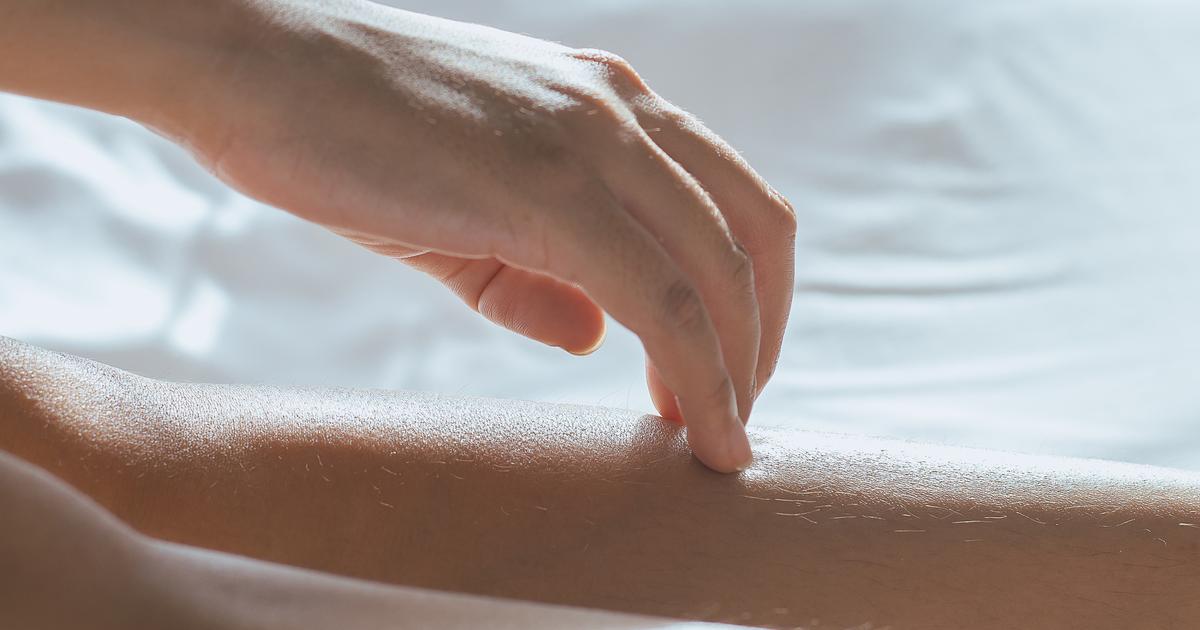Key Symptoms Of Varicose Eczema To Watch For
Varicose eczema, a type of eczema that occurs on the lower legs, is a chronic skin condition that most commonly affects individuals who have varicose veins. Other terms for the condition are stasis, gravitational, or venous eczema. Most patients experience varicose eczema as a long-term issue, and there's no guarantee it will ever go away or fully resolve. However, several treatments are available to help control it. The condition shares symptoms with all forms of eczema, but there are additional issues unique to this particular problem. If individuals see the warning signs of varicose eczema, they should talk to their doctor, who can often make a diagnosis by looking at their skin, though they may also refer them to a dermatologist.
Unveil the key symptoms of varicose eczema to watch for now.
Varicose Veins

Individuals with varicose eczema often have a prior history of varicose veins, which are enlarged and swollen veins that tend to occur on the feet and legs. They tend to have a twisted, bulging, or lumpy appearance, and they may range from blue to dark purple in hue. Unlike surface conditions like spider veins, varicose veins can cause problems beyond cosmetic issues. Patients might experience aching and heaviness in their legs, swelling in their ankles and feet, throbbing or burning in their legs, and cramping in their leg muscles. This cramping is often worse at night when trying to sleep. In addition, the skin over the bulging vein may be thin, itchy, and dry. Most patient's symptoms get worse after they stand for long periods or when the weather is warm. Walking around or resting and raising the legs can improve symptoms because it keeps fluid from pooling in the bottoms of the legs. Patients whose varicose veins don't cause discomfort might not need medical treatment.
Continue reading to reveal more symptoms of varicose eczema now.
Dry And Cracked Skin

As varicose eczema is one of many types of eczema, it has the same core symptoms every kind of eczema comes with. One of the hallmark symptoms of eczema is dry and cracked skin. A patient's skin might become flaky and seem to shed or be scaly as they walk around. They might constantly feel like they're itching away dry skin. It might also feel like they always need to put moisturizer on their legs. If individuals have eczema on any other parts of their body, the same might be true there. The dryness can get worse if patients are out in extremely dry conditions like desert heat or a blisteringly cold day.
Cracks in the skin can range from annoying to painful. When they occur in the legs, they might be accompanied by pain, itchiness, or potential bleeding. Symptoms may go through periods of getting better before becoming more severe. In addition to moisturizing the legs, some individuals recommend getting a humidifier to moisten the air, especially during dry winter months.
Discover additional warning signs of varicose eczema now.
Aching Or Heavy Legs

Varicose veins and varicose eczema are both often accompanied by aching or heavy legs. Not everyone who has these conditions will experience aching in the legs, and patients might not need treatment if they don't. However, for those who do, the sensation can range from annoying to painful and debilitating. Aching in the legs inhibits the patient's ability to do what they want every day like going from place to place, standing up, exercising, or even relaxing when they finally get home. Medical professionals refer to tiredness in the feet and legs as tired leg syndrome. The most common cause is there is an insufficiency in the cardiovascular system. In the case of varicose veins, it's caused by the walls of the blood vessels being pushed out by immense and excessive pressure. The wider the blood vessels become, the harder it is for blood to be pumped back up to the heart. If individuals stand in one place for a long time, blood and fluid tend to pool in their calves and feet rather than moving back upward, causing heaviness and aching.
Read more about varicose eczema symptoms now.
Swollen And Itchy Skin

Swelling and itching of the skin are other hallmark symptoms of every kind of eczema, including varicose eczema. The skin might become even itchier when it cracks. If patients itch the cracked skin, they may further damage it or cause it to bleed, which becomes a vicious cycle. Scratching at the skin can also make it feel drier and flakier than it already was. The best way to mitigate the itchiness is through carefully moisturizing the affected parts of the legs and applying anti-itch agents if possible. The swelling will vary widely from person to person. Some patients might experience extremely swollen legs, while others might just have nuisance patches. One of the most common ways varicose veins and eczema are treated is through compression socks, which gently compress the blood vessels inside the leg to make it easier for the blood to move through the cardiovascular system. There isn't room for the blood to pool in the legs, so the swelling goes down.
Learn more about the various warning signs of varicose eczema now.
Venous Ulcers

Venous ulcers are one of the most painful potential effects of varicose eczema. They typically require treatment by a doctor, such as a primary doctor or dermatologist. While ulcers can occur anywhere, venous ulcers mostly develop on the legs. They often accompany varicose veins and are caused by issues with blood circulation in the legs. Typically, when individuals suffer a scrape or cut, the body uses its healing process to close the wound, and as time goes by, the wound heals. With ulcers, this isn't the case, and they can go on and continue being painful until they're treated by a professional. Most venous ulcers are found on or around the ankles. The majority are caused by damage to valves that regulate blood pressure in the leg veins. If an individual's blood pressure doesn't fall as they walk, it causes sustained hypertension in the legs, which leads to ulcer formation.
